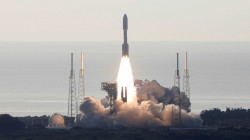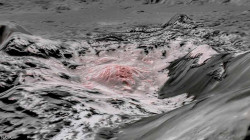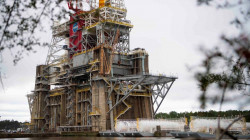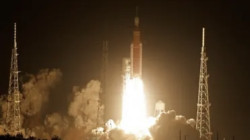NASA’ Perseverance rover has successfully landed on Mars
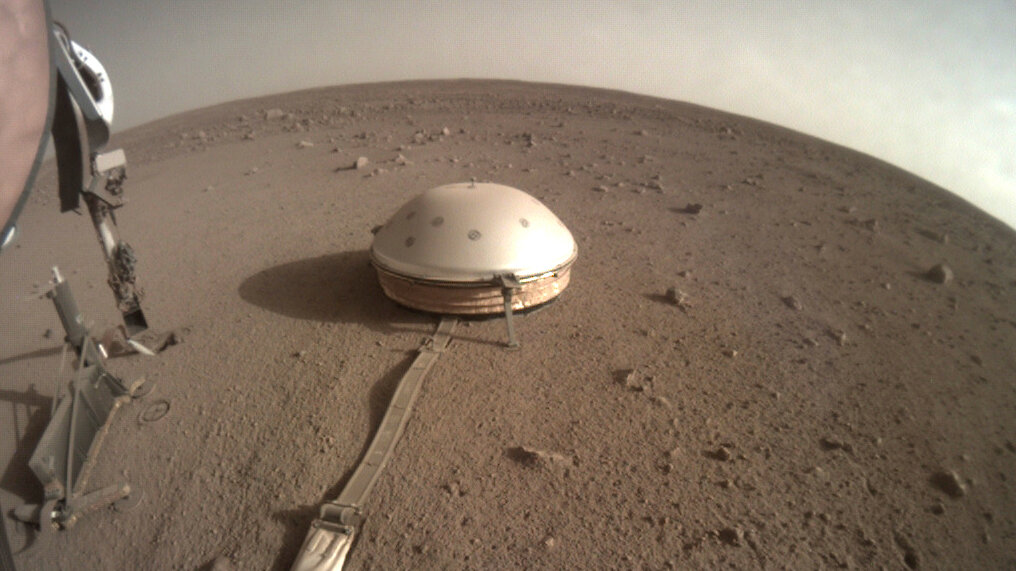
Shafaq News/ The NASA Perseverance rover safely landed on Mars after its 470 million km journey from Earth.
The rover landed itself flawlessly, according to the mission's team
"Percy," as the spacecraft is affectionately called at mission control, sent back its first images of the landing site immediately after touchdown, which shows the rover's shadow on the surface of its landing site of Jezero Crater.
The rover has been on a nearly 300 million-mile journey since it left Earth more than 6 months ago. Perseverance and her teams lived up to the namesake, overcoming the challenges of preparing for the journey's final stages during a pandemic.
The most sophisticated rover NASA has built to date has a packed agenda for the next few years.
The rover will explore Jezero Crater, the site of an ancient lake that existed 3.9 billion years ago, and search for microfossils in the rocks and soil there. Follow-up missions will return samples of this site collected by Perseverance to Earth by the 2030s.
Along for the ride with Perseverance is an experiment to fly a helicopter, called Ingenuity, on another planet for the first time.
Now that the rover has landed, the mission truly begins.
"There is something special about the first few days, because we have just landed a representative of the planet Earth on a place on Mars that no one has ever been to," said Mike Watkins, director for JPL.
Perseverance is NASA's ninth landing on Mars and the agency's fifth rover. In order to land, it had to go through the infamous "seven minutes of terror."
The one-way time it takes for radio signals to travel from Earth to Mars is about 11 minutes, which means the seven minutes it takes for the spacecraft to land on Mars occurs without any help or intervention from NASA teams on Earth.
This rover is the heaviest NASA has ever attempted to land, weighing in at over a metric ton.
The spacecraft hit the top of the Martian atmosphere moving at 12,000 miles (19,000 Km) per hour and had to slow down to 1.7 miles per hour seven minutes later when the rover softly landed on the surface.
The spacecraft's heat shield endured peak heating of 2,370 degrees Fahrenheit.
Perseverance targeted a 28-mile-wide ancient lake bed and river delta, the most challenging site yet for a NASA spacecraft landing on Mars. Rather than being flat and smooth, the small landing site is littered with sand dunes, steep cliffs, boulders and small craters. The spacecraft has two upgrades -- called Range Trigger and Terrain-Relative Navigation -- to navigate this difficult and hazardous site.
These upgrades helped Perseverance with its picture-perfect landing on Mars.
Amid the rugged terrain, the rover landed in a nice flat "parking lot" and avoided all of the hazards, said Allen Chen, lead for the entry, descent and landing team.
The NASA Mars Reconnaissance Orbiter relayed data from the rover throughout landing.
Now that the rover has landed, Perseverance's two-year mission will begin. It landed about 1.2 miles to the southeast of the river delta in the crater.
Follow its journey using an interactive map. Any raw images sent back by the rover this week and going forward will also be immediately available to the public on NASA's site. The mission team is expecting new images Friday.
First, the rover will go through a "checkout" period.
Perseverance will capture images of its surroundings and send them back, unfold its "head" and take more pictures while going through some health checkups with engineers.
Teams on Earth will go through a month of inspections, software downloads and preparations for roving.
The helicopter team will make sure Ingenuity is safe, healthy and ready to fly, "a true extraterrestrial Wright Brothers moment," according to Zurbuchen.
Over a process that takes about 10 days, the rover will drop the helicopter on the surface of Mars and roll away from it. The little 4-pound helicopter will have to survive frigid nights on Mars, keep itself warm and charge itself using solar panels. Then, it will be ready for its first flight, which will last about 20 seconds.
Perseverance will search for evidence of ancient life and study Mars' climate and geology and collect samples that will eventually be returned to Earth by the 2030s.
The path Perseverance will traverse is about 15 miles long, an "epic journey" that will take years, Farley said. What scientists could discover about Mars, though, is worth the journey. To accomplish its goals, Perseverance will drive a little less than 0.1 mile per hour, three times faster than previous rovers.
Perseverance also carries instruments that could help further exploration on Mars in the future, like MOXIE, the Mars Oxygen In-Situ Resource Utilization Experiment. This experiment, about the size of a car battery, will attempt to convert Martian carbon dioxide into oxygen.
Not only could this help NASA scientists learn how to produce rocket fuel on Mars, but also oxygen that could be used during future human exploration of the red planet.
